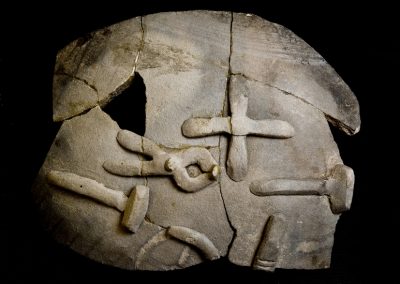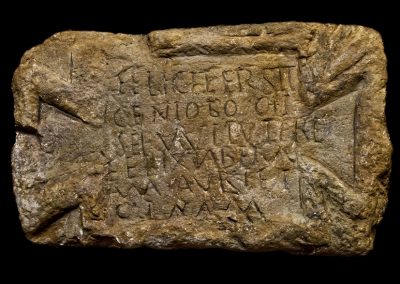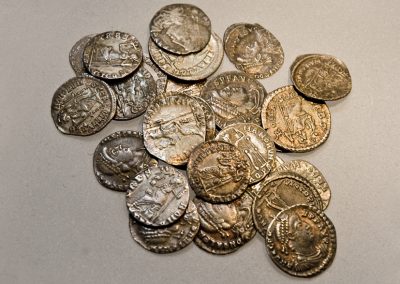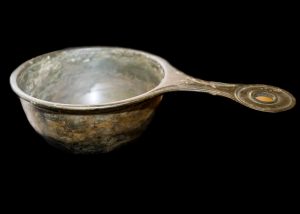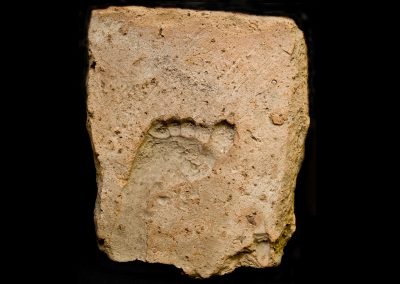Making sense of Roman ‘Smith Pots’
We can find out lots about life in the past by examining objects like these – even if they’re not complete. Archaeologists often uncover fragments of pottery and are left with the task of piecing them together and trying to make sense of them. Ancient civilisations rarely leave us complete bowls!
In Roman times, pottery was a versatile item, used for everything from cooking and storage to ceremonial purposes. But what was the purpose of these ‘Smith’s’ pots, so called because of the application of blacksmith iconography?
You can see two clear examples, one from Aldborough Roman Site (cared for by English Heritage) and another from Roman Norton, now in Malton Museum. Both bowls are decorated with the tools of a smithy – the hammer, anvil and tongs. The example from Aldborough was also found in the blacksmith’s workshop.
It’s fascinating to know that blacksmiths around the country had these items. But how might a blacksmith have used these pots?
Following the clues
To decide on the significance of such items, it’s helpful to know a bit more about pottery. Typically in Roman times, more expensive pottery included decorative and design elements, like the applied decoration on these examples.
It’s possible that the pots were used to make offerings to the God Vulcan, to protect the blacksmiths and their workshops from fire and danger.
However, both pots are made from a material known as ‘greyware’. Not only was greyware commonly made across the Roman Empire from the first century onwards, it was also very often used for utilitarian objects. This might include food and storage vessels, as well as cooking pots. It was normally thrown and sculpted on a pottery wheel and had a matt finish.
The Romans in northern England
The Romans invaded Britain in AD 43 under Emperor Claudius and made it part of the Roman Empire. They made advances into the ‘northern regions’, like present-day Yorkshire from around AD 70. They built roads, towns, and Hadrian’s Wall to protect the northern border. Roman rule brought new ways of life, including buildings and laws.
Aldborough was the prosperous Roman town of Isurium Brigantum. From around AD 120 to AD 400, it was the the civilian ‘capital’ of an extensive region of north Britain, strategically important as it was on a road network and on the river Ure.
We know that the area we now know as Norton, near Malton in North Yorkshire, was a centre for metal work and also a hub for pottery making in Roman times. There were at least 15 kilns in the town at that time and a great deal of evidence of this past industry has been found in the form of pottery sherds – broken and sharp fragments of ceramic material.

An example from Hadrian’s Wall
A little further north, another fragment thought to be of a ‘blacksmith pot’ has been found in Corbridge Roman Town (English Heritage), dating from the 3rd century AD.
It’s trickier to see, but the fragment shows a male figure. He’s holding tongs and a hammer and has been interpreted as the blacksmith god. The tongs are holding something, which rests on an anvil. Can you spot his bearded face and toga?
Click on the photo to enlarge this pottery fragment from Corbridge Roman Site, Hadrian’s Wall (English Heritage).
Watch the video to explore Roman pottery with your group
Watch The Video With Subtitles
At a glance – click to see ‘blacksmith pot’ designs
Talking Points
Can you spot the tongs and hammers on the pot? Why do you think the tools are still used by modern blacksmiths?
Do you think the pot would have felt warm or cold to touch? Do you think it would be rough or smooth?
What other decorations can you spot? Do you like the details?
There are lots of Roman artefacts linked to ironworking – what does this tell us about Roman life?
Why do you think we find so much evidence of Roman pottery?
Do you think you would you feel pleased to find pottery sherds or frustrated?
Have you ever found a fragment of pottery before? Why do you think you need to handle them carefully?
Would you mind using pottery vessels like this to store your objects, instead of plastic or glass? Would there be mostly advantages or disadvantages to using pottery instead of other modern materials?

Vocabulary
Greyware: the name given to the most common type of pottery found in Roman sites in Britain. It is used to describe locally produced pottery as opposed to pottery that was imported.
Sherds: the broken and sharp fragments of ceramic material found on archaeological digs
Iconography: symbols used to represent something in a work of art
Relief: sculpted details that are raised above the flat background surface
Hold a debate
Tell students that you are replaying the video clip to listen to the disagreement about whether the Smith’s pot could have been an expensive and significant object. You could ask them to comment on how the two presenters speak to each other. Are they polite? Do they appear to respect each other’s views?
Introduce the debate motion: blacksmith pots were very special examples of pottery in Roman Britain. What do students think? Read tips to help you create formal debates.
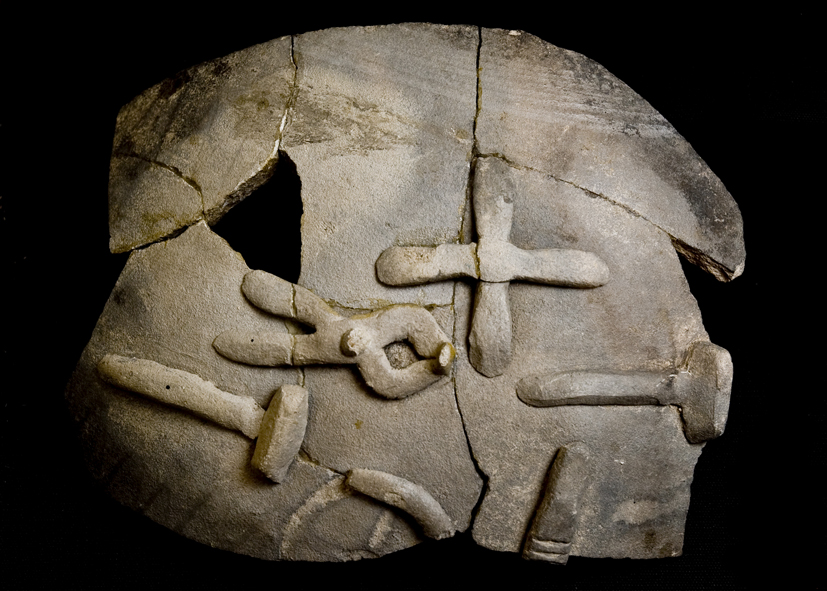
Create your own pottery with this art activity video
Use the video to create Roman-style pottery with relief work. What designs could you include?
Watch The Video With Subtitles
Hands on History
Schools can book free self-led visits to Aldborough Roman Site and Corbridge Roman Town on Hadrian’s Wall, both cared for by English Heritage.
Discover more about the collection at Corbridge Roman Town.
Discover more about the collection at Aldborough Roman Site.
Click on the pins on the maps to find out more about the English Heritage sites.
Malton Museum runs ‘Roman Legacy’ workshops in schools across the region and you can also borrow an object loan box to explore the Romans in Ryedale.
There is a replica of the fragment of the blacksmith’s pot from Malton Museum included in the loan box.
Find out more about how to identify pottery from fragments with this helpful guide from DigVentures.
Explore more objects on the site from Roman times







